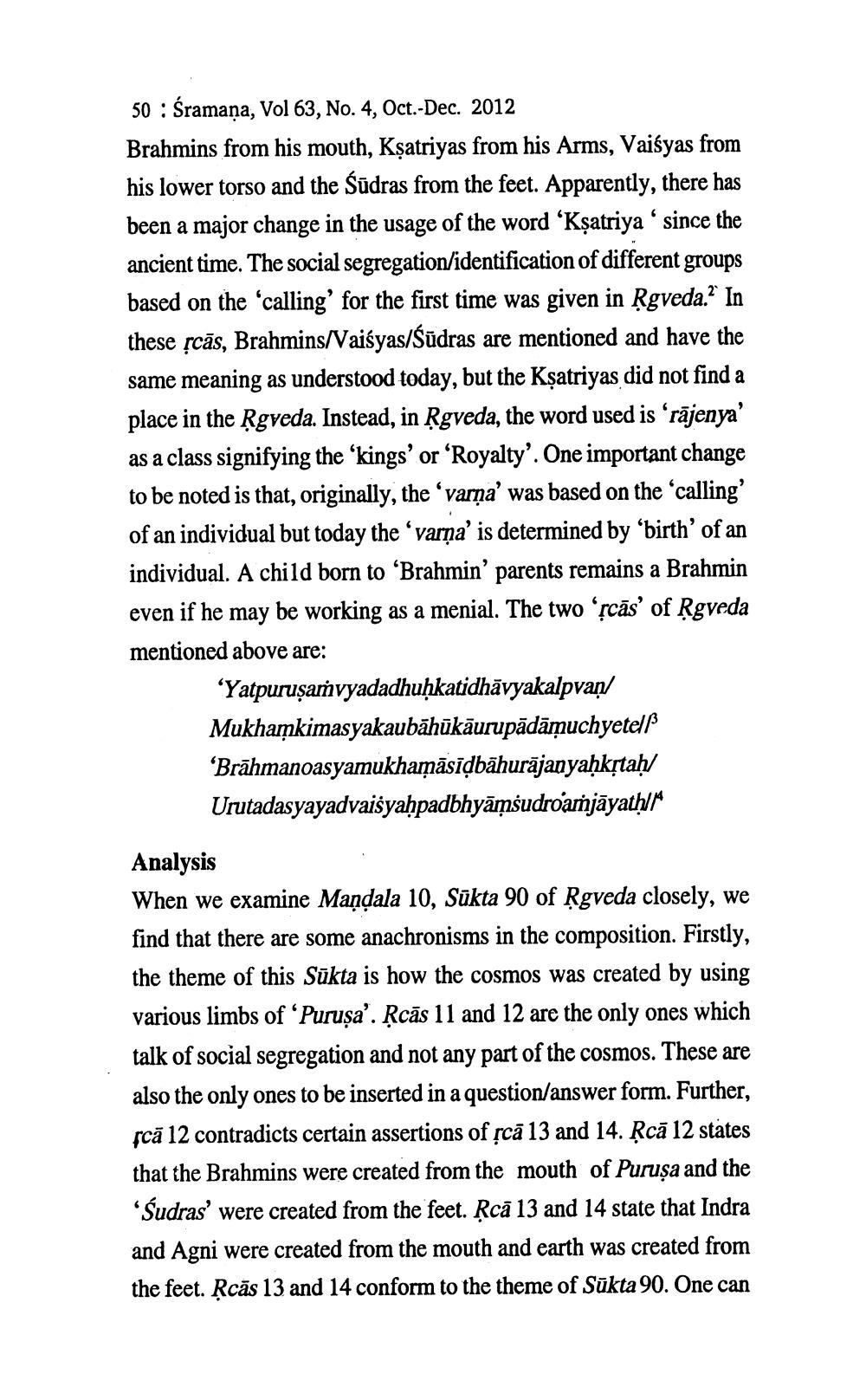________________
50 : Śramaņa, Vol 63, No. 4, Oct.-Dec. 2012 Brahmins from his mouth, Kșatriyas from his Arms, Vaiśyas from his lower torso and the Sūdras from the feet. Apparently, there has been a major change in the usage of the word ‘Kșatriya' since the ancient time. The social segregation/identification of different groups based on the 'calling' for the first time was given in Rgveda.” In these scās, Brahmins/Vaisyas/Śūdras are mentioned and have the same meaning as understood today, but the Kșatriyas did not find a place in the Ķgveda. Instead, in Ķgveda, the word used is ‘rājenya' as a class signifying the 'kings' or 'Royalty'. One important change to be noted is that, originally, the 'varņa' was based on the calling' of an individual but today the ‘varna' is determined by “birth' of an individual. A child born to 'Brahmin' parents remains a Brahmin even if he may be working as a menial. The two ‘rcās' of Rgveda mentioned above are:
‘Yatpuruşamvyadadhuḥkatidhāvyakalpvan Mukhamkimasyakaubāhūkāurupādāmuchyetels “Brāhmanoasyamukhamāsīļbāhurājanyaḥkstaḥ/ Urutadasyayadvaisyahpadbhyāņšudroaṁjāyath)
Analysis When we examine Mandala 10, Sūkta 90 of Rgveda closely, we find that there are some anachronisms in the composition. Firstly, the theme of this Sūkta is how the cosmos was created by using various limbs of 'Puruşa'. Rcās 11 and 12 are the only ones which talk of social segregation and not any part of the cosmos. These are also the only ones to be inserted in a question/answer form. Further, scā 12 contradicts certain assertions of scā 13 and 14. Řcā 12 states that the Brahmins were created from the mouth of Puruşa and the ‘Sudras' were created from the feet. Ķcā 13 and 14 state that Indra and Agni were created from the mouth and earth was created from the feet. Řcās 13 and 14 conform to the theme of Sūkta 90. One can




